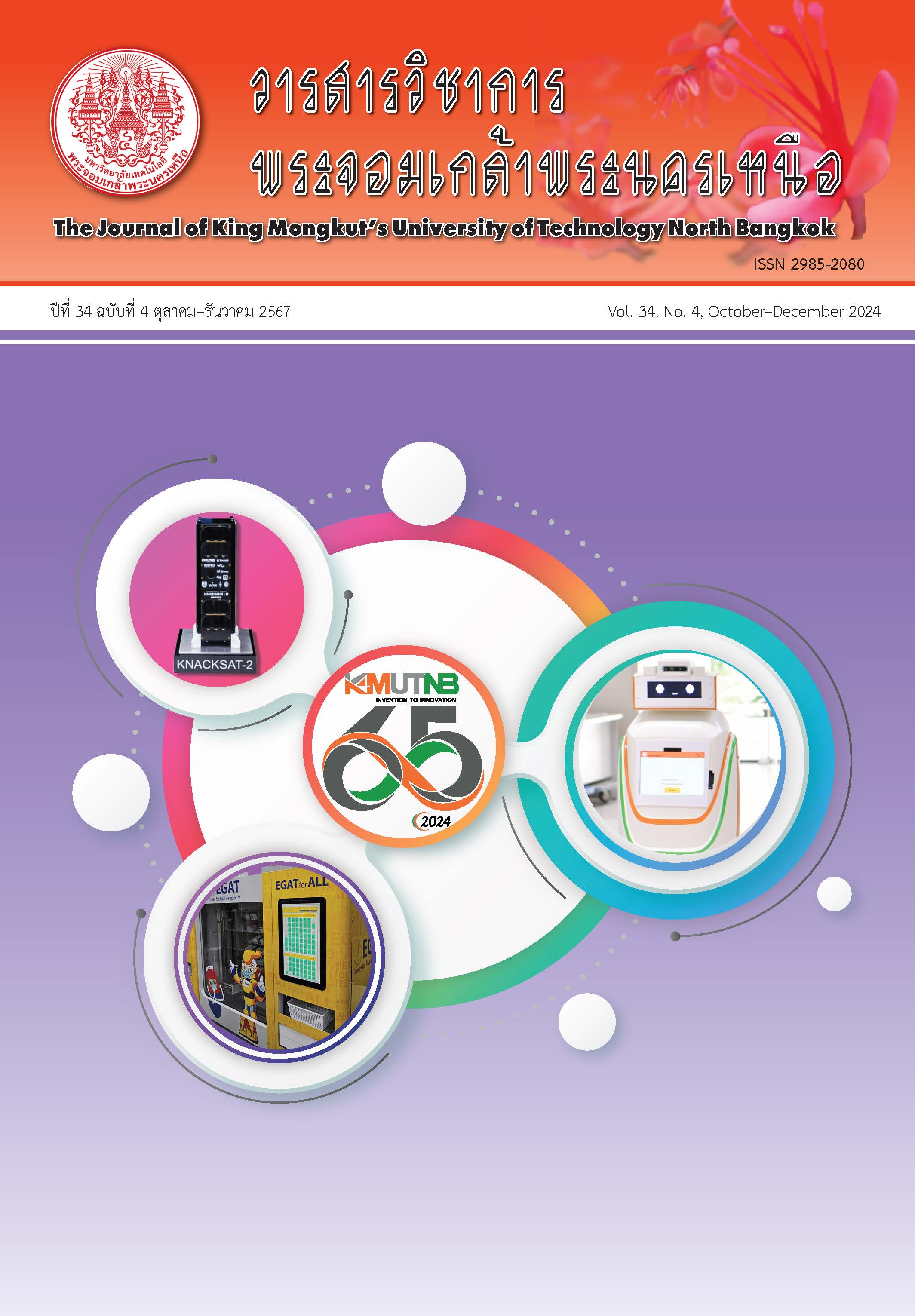พฤติกรรมการตัดสินใจหยุดหรือผ่านบริเวณสามแยกในช่วงสัญญาณไฟเหลืองที่ติดตั้งสัญญาณไฟเขียวกระพริบก่อนไฟเหลือง
Main Article Content
บทคัดย่อ
งานวิจัยนี้ศึกษาและเปรียบเทียบพฤติกรรมการตัดสินใจของผู้ขับขี่ในช่วงสัญญาณไฟเหลือง ในบริเวณสามแยกสัญญาณไฟจราจรที่ติดตั้งสัญญาณไฟเขียวกระพริบก่อนไฟเหลือง การศึกษานี้สำรวจลักษณะการควบคุมการจราจรในบริเวณสามแยกสี่แห่งในเขตเมืองนครราชสีมา สังเกตพฤติกรรมของผู้ขับขี่รถนั่งส่วนบุคคล จำนวน 535 คัน ที่เข้าสู่ทางแยกในขณะที่สัญญาณไฟเหลืองปรากฎ ผลการศึกษาพบว่า รถใช้ความเร็วสูงเข้าสู่ทางแยกในช่วงสัญญาณไฟเหลือง ทุกแห่งมีความเร็วที่85 เปอร์เซ็นต์ไทล์สูงกว่าความเร็วจำกัด 3–40 กิโลเมตรต่อชั่วโมง ผู้ขับขี่ร้อยละ 45 ที่อยู่ในระยะ 100 เมตร จากทางแยกเมื่อสัญญาณไฟเหลืองปรากฎตกอยู่ภายในเขตหนีเสือปะจระเข้ประเภทที่ 1 ในกลุ่มนี้ผู้ขับขี่ส่วนมาก (ร้อยละ 66) เลือกผ่านทางแยกไป ทางแยกที่เพิ่มจังหวะสัญญาณไฟเขียวกระพริบไว้ก่อนสัญญาณไฟเหลืองมีขนาดเขตหนีเสือปะจระเข้ประเภทที่ 2 หรือเขตไม่แน่ใจกว้างกว่าและมีตำแหน่งเริ่มหยุดใกล้เส้นหยุดกว่าทางแยกที่ติดตั้งสัญญาณไฟปกติ
Article Details

อนุญาตภายใต้เงื่อนไข Creative Commons Attribution-NonCommercial-NoDerivatives 4.0 International License.
บทความที่ลงตีพิมพ์เป็นข้อคิดเห็นของผู้เขียนเท่านั้น
ผู้เขียนจะต้องเป็นผู้รับผิดชอบต่อผลทางกฎหมายใดๆ ที่อาจเกิดขึ้นจากบทความนั้น
เอกสารอ้างอิง
World Health Organization, “Global status report on road safety 2018,” World Health Organization, vol. 151, no. 2, 2018.
S. Buahome, T. Satiennam, and W. Satiennam, “Driver’s speed and stop/go decision during the onset of yellow: a high-speed urban mixed traffic intersection case study,” KKU Research Journal (Graduate Studies), vol. 20, no. 1, 2020 (in Thai).
H. Köll, M. Bader, and K. W. Axhausen, “Driver behaviour during flashing green before amber: A comparative study,” Accident Analysis and Prevention, vol. 36, no. 2, pp. 273–280, 2004.
R. Factor, J. N. Prashker, and D. Mahalel, “The flashing green light paradox,” Transportation Research Part F: Traffic Psychology and Behaviour, vol. 15, no. 3, pp. 279–288, 2012.
H. Huang, D. Wang, L. Zheng, and X. Li, “Evaluating time-reminder strategies before amber: Common signal, green flashing and green countdown,” Accident Analysis and Prevention, vol. 71, pp. 248–260, 2014.
D. Mahalel, D. Zaidel, and T. Klein, “Driver’s decision process on termination of the green light,” Accident Analysis and Prevention, vol. 17, no. 5, pp. 373–380, 1985.
M. S. Short, G. A. Woelfl, and C. J. Chang, “Effects of traffic signal installation on accidents,” Accident Analysis and Prevention, vol. 14, no. 2, pp. 135–145, 1982.
K. Tang, Y. Xu, P. Wang, and F. Wang, “Impacts of flashing green on dilemma zone behavior at high-speed intersections: Empirical study in China,” Journal of Transportation Engineering, vol. 141, no. 7, p. 04015005, 2015.
R. N. Mussa, C. J. Newton, J. S. Matthias, E. K. Sadalla, and E. K. Burns, “Simulator evaluation of green and flashing amber signal phasing,” Transportation Research Record, no. 1550, pp. 23–29, 1997.
B. K. Pathivada and V. Perumal, “Analyzing dilemma driver behavior at signalized intersection under mixed traffic conditions,” Transportation Research Part F: Traffic Psychology and Behaviour, vol. 60, pp. 111–120, 2019.
J. Bonneson, D. Middleton, K. Zimmerman, and H. Charara, “Intelligent detection-control system for rural signalized intersections,” Texas Department of Transportation, Austin, TX, U.S.A. Rep. No. FHWA/TX03/4022-2, 2002.
L. F. Mannering and S. S. Washburn, Principles of highway engineering and traffic analysis. John Wiley & Sons, 2020.

